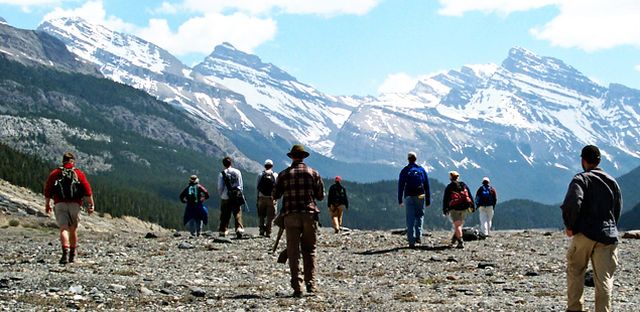
Geology Faculty Publications
Document Type
Article
Publication Date
2015
Publication Source
Stratigraphy
Abstract
This guidebook was written for the 2015 International Symposium on the Ordovician System (ISOS) as a synopsis of the recent work (e.g., Goldman et al. 2007; Carlucci et al. 2014, forthcoming work for the ISOS meeting) on Ordovician-Silurian rocks of south-central and south-eastern Oklahoma. This new research and past studies (e.g., Harris 1957; Longman 1976; Longman 1982a, b; Fay et al. 1982a; Fay et al. 1982b) underscore the scientific importance of this region. The global stratotype section and point for the Katian Stage of the Upper Ordovician Series is examined on this trip. The first appearances of important graptolites, conodonts and chitinozoans in that section are crucial for worldwide chronostratigraphic correlation.
Vertical and lateral facies changes of the Simpson Group demonstrate the variety and intricacy of sedimentary cycles and the importance of updating depositional models with sequence stratigraphic data. Carbonate facies of the Arbuckle Group are of general interest to all geologists, as they demonstrate a wide variety of sedimentary structures and fabrics that were deposited in tropical epeiric seas. Arbuckle Group carbonates show a variety of peloidal, oolitic, fossiliferous, stromatolitic, and brecciated facies that provide important insights into the depositional history of the “Great American Carbonate Bank” (Taylor et al. 2012).
Simply put, these deposits are an exceptional natural laboratory for the sedimentary geologist. Siliciclastic deposits are also common in the Simpson and Arbuckle Groups, with shoreface sands and siltstones forming “bookends” to formation boundaries. The scientific importance of the Arbuckle region also extends into the realm of structural geology, where geologic cross sections (Fig. 1) of the Ardmore Basin, Arbuckle Anticline, and Washita Valley demonstrate overturned strata, extensive reverse faulting, and a series of major synclines and anticlines at a variety of scales. Pennsylvanian age tectonic features are just another example of why the Arbuckle Mountains is an excellent natural laboratory for field geologists.
Inclusive pages
144-202
ISBN/ISSN
1547-139X
Document Version
Published Version
Copyright
Copyright © 2015, North American Commission on Stratigraphic Nomenclature. The item available for download is provided with the permission of the publisher, in accordance with the journal's open-access policy.
Publisher
North American Commission on Stratigraphic Nomenclature
Volume
12
Issue
2
Peer Reviewed
yes
eCommons Citation
Carlucci, Jesse R.; Goldman, Daniel; Brett, Carlton E.; Westrop, Stephen R.; and Leslie, Stephen A., "Katian GSSP and Carbonates of the Simpson and Arbuckle Groups in Oklahoma" (2015). Geology Faculty Publications. 5.
https://ecommons.udayton.edu/geo_fac_pub/5



Comments
Permission documentation is on file.